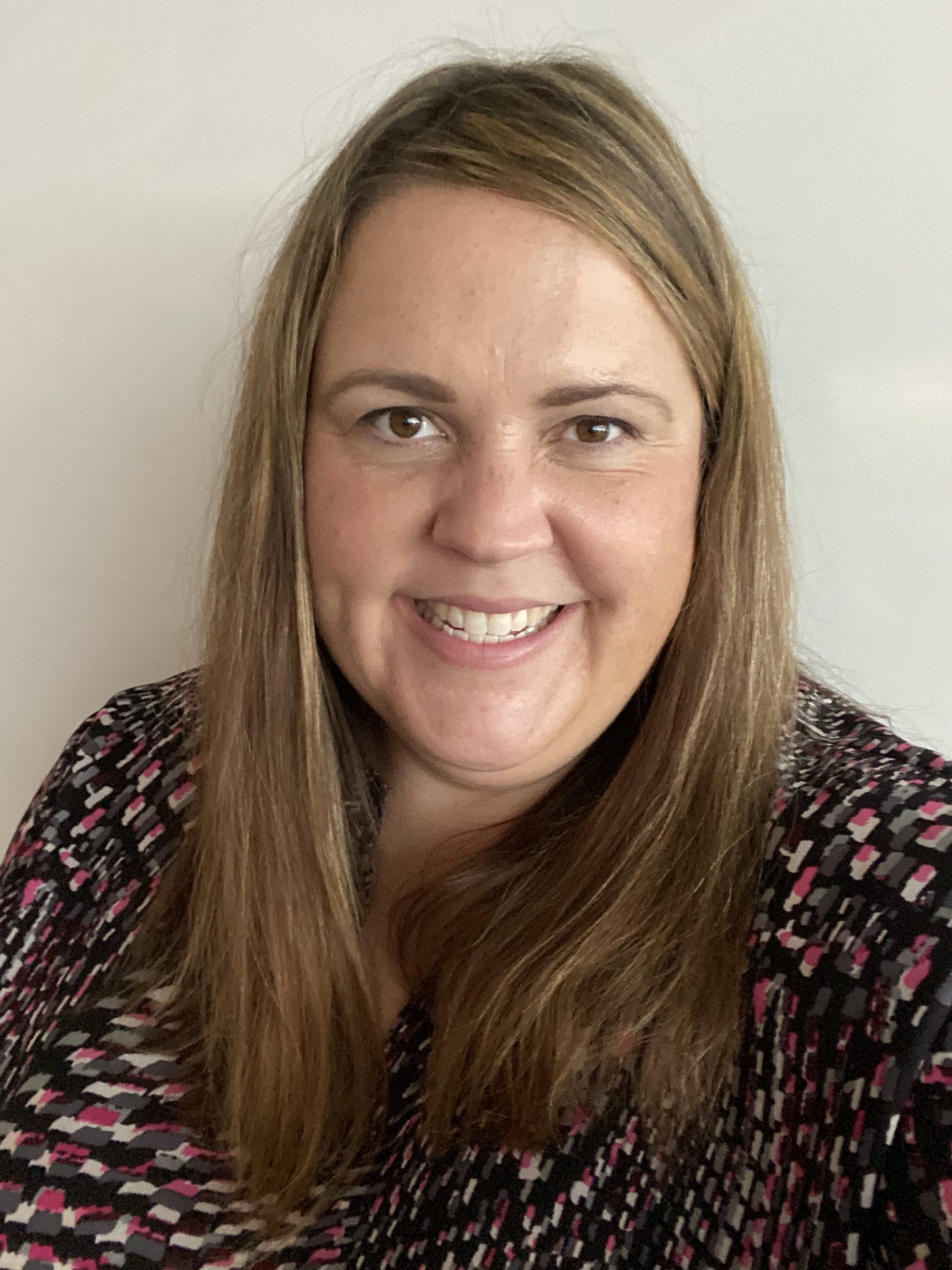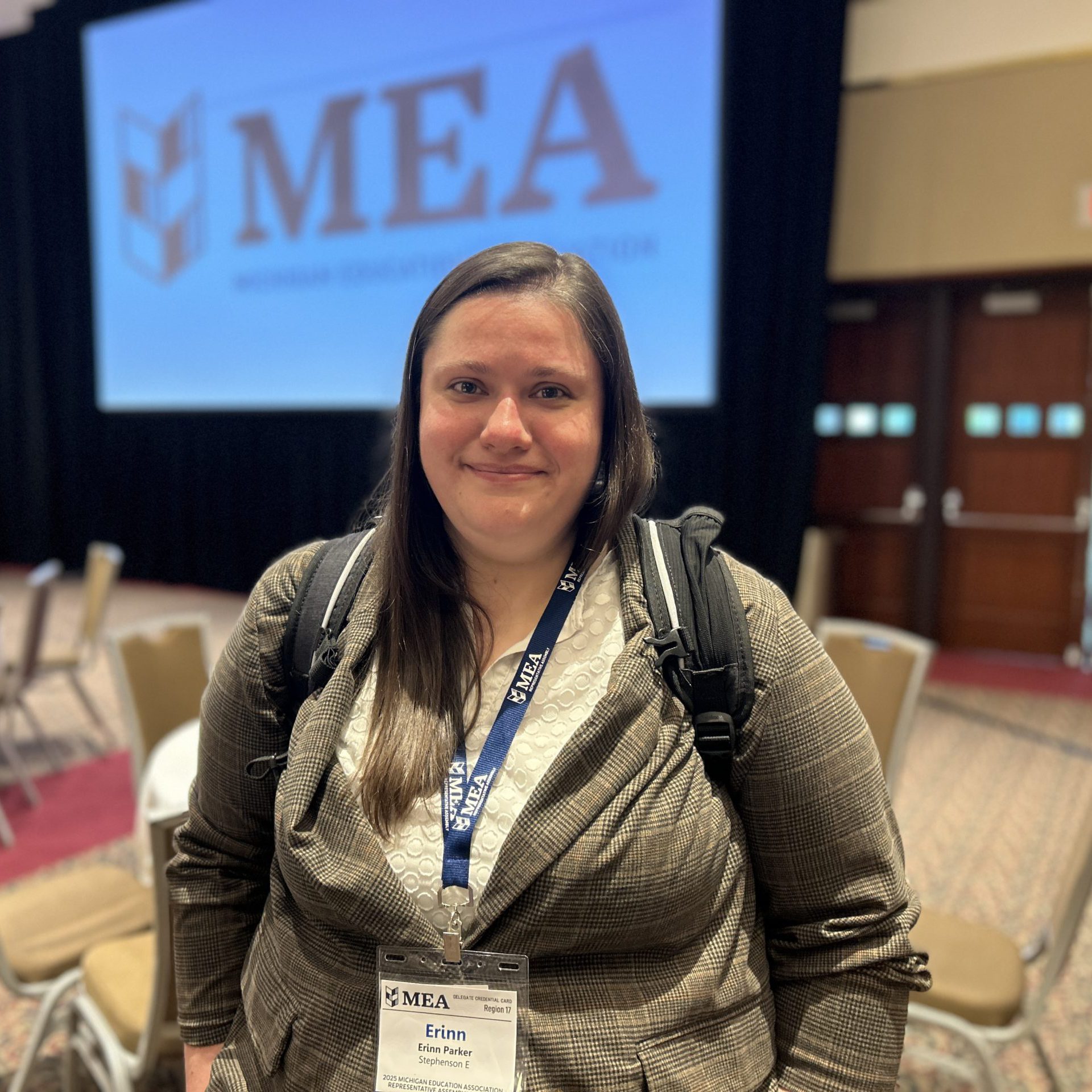Member Spotlight: Kat Sibalwa
Last March Kat Sibalwa, Byron Center High School teacher and BCEA co-president, was set to talk about MEA with soon‑to‑graduate aspiring educators at Grand Valley State University. Then the pandemic hit, and suddenly she was teaching from home with two small children and a husband working in health care.

Had you presented to aspiring educators before?
No. I’ve been a co-president with a friend for five years, and our focus has been on how to reach those new people in our district. When I was in school nobody ever talked to me about the teacher’s union, or the EA. I really feel if people understand what we do, and who we are, and what we stand for, they will join. So I really wanted to focus on the teachers coming out of college. Before they get a job. And my goal was to get a bug in their ear about the importance of being in a union. My mother taught for 40 years and her former principal is a professor at Grand Valley for student teachers. She ran into him a while back, and that’s how I got hooked up with them.
Did you think of cancelling when schools shut down?
I wasn’t sure what would happen, but (GVSU) actually went virtual before the public schools did, so the professor contacted me and said he still wanted students to hear from us. It was their last week of their last semester of class. The vice president and I presented virtually to 75 student teachers about the history of MEA and unions, what we do, the importance of them, how to become a member when you get a job. We also talked about how we sometimes falsely get a bad rap and what we really stand for.
What did you want to be their takeaway?
Find your union representative when you get hired and be sure to sign up to be in your union. And then the second takeaway was to start saving for your future retirement, even though you’re just starting a job. With MEA Financial Services, of course. And it went really well. They want us to come back.
What message about the union most resonated?
I think it was that education is a social justice issue. I showed pictures of me and my children when we went to Lansing last year for the Red for Ed Rally, and how we were marching to the Capitol, and just talking about the importance of us sticking together, standing for what’s right for our kids, and how we believe in education as the great equalizer. It all comes back to the kids and what’s best for the classroom.
How did you do it virtually?
At GVSU, they use Blackboard as a platform. We had created a PowerPoint, and the professor uploaded it to Blackboard and gave us administrator rights. We could see when students signed in, but we couldn’t see their faces. If they had a question, they could virtually raise their hand or type it in the chat. We wanted to play a game and do an ice-breaker, but that was harder to do online than what we could do.
Could you tell if it was well‑received?
Oh, yes, we had a lot of people, and we could see a lot of them making comments. “Wow. Thanks. This is really helpful. This is exactly what I wanted to hear before I got a job.” So, yes, I believe it was very well-received. I also followed up with the professor just to make sure it went OK, and he said, “Yep, that was awesome. I loved it.” I said, “Hey, is there anything you would want us to change or add if we were to come back again?” He’s like, “No, I think it was spot on. That’s really good.” So yeah, I was excited it went well. I hope to eventually get into a couple more universities because the hard part’s done. Figuring out that presentation and what we wanted to do and say was the hard part, and now we’ll get better at it every time. We definitely want to expand and see what we can do.


